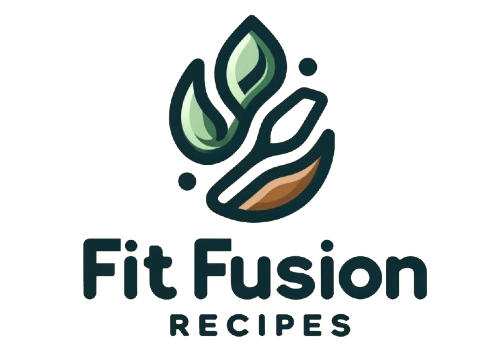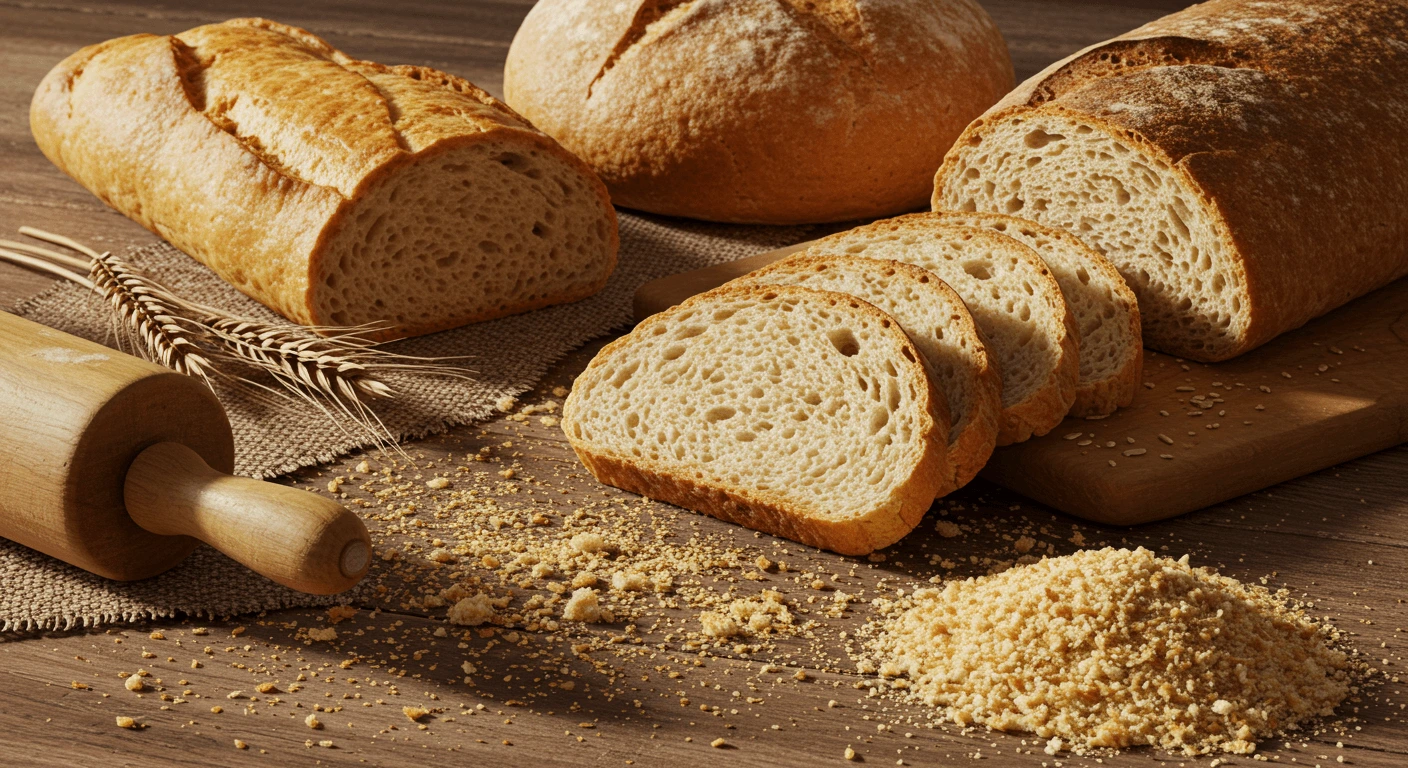Did you know that stale bread and leftover crumbs can be the secret ingredients to some of the most delicious and creative dishes? Don’t toss them out—transform them into culinary gold!
Discover the versatility of bread and crumbs in cooking. Learn how to make your dishes better with these essential ingredients. Bread and crumbs are key in many kitchens because they add texture, flavor, and depth to recipes.
They can be used in many ways, from breading and crumbing to binding ingredients together. The possibilities are endless.
With a little creativity, you can turn old bread into gourmet croutons. Or use breadcrumbs to add crunch to your favorite snacks. Whether you’re a seasoned chef or a beginner, mastering bread and crumbs can elevate your cooking. Explore the world of bread and crumbs and add a new dimension to your cooking.
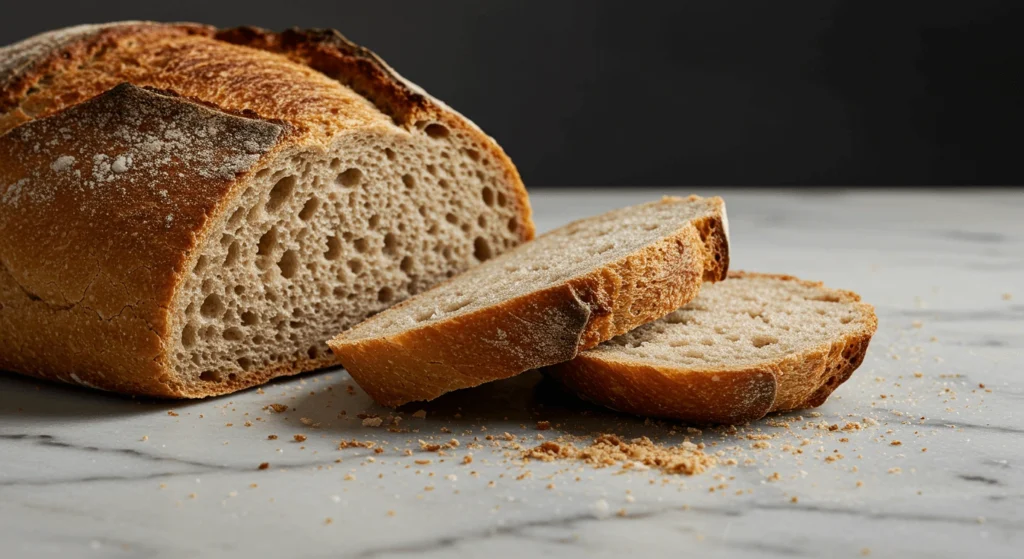
Table of Contents
Introduction to Creative Cooking
In this article, we’ll explore the many uses of bread and crumbs in cooking. We’ll provide you with inspiration for your next culinary adventure. From bread and crumbs to breading and crumbing, we’ll cover it all.
Key Takeaways
- Learn how to use bread and crumbs in various cooking techniques
- Discover the benefits of using breadcrumbs as a binding agent
- Get inspired by creative recipes that feature bread and crumbs
- Master the art of transforming day-old bread into gourmet croutons
- Explore the many uses of bread and crumbs in cooking, from snacks to main courses
Understanding the Versatility of Bread and Crumbs in Modern Cooking
Bread and crumbs are key in adding texture and flavor to dishes. They can make a dish crunchy or savory. Knowing their types and how to store them is crucial.
There are two main types: fresh and dried breadcrumbs. Fresh ones are from soft bread and are great for light textures. Dried breadcrumbs from stale bread, add crunch. This knowledge helps in making many tasty dishes.
Different Types of Breadcrumbs
- Fresh breadcrumbs: made from soft, fresh bread
- Dried breadcrumbs: made from stale bread
Fresh vs. Dried Breadcrumbs
Fresh breadcrumbs are ideal for meatballs or meatloaf. They give a light texture. Dried breadcrumbs are better for coating chicken or fish. They provide a crunchy exterior.
Storage and Shelf Life
To maintain the freshness of breadcrumbs, place them in a sealed, airtight container. Keep it in the fridge or freezer. This keeps their texture and flavor, making them versatile for many recipes.
Transform Day-Old Bread into Gourmet Croutons
Want to add a crunchy texture to your meals? Try turning day-old bread into gourmet croutons. It’s easy and needs just a few ingredients. With the right culinary tips, your dishes will taste amazing.
First, pick the right bread. A crusty bread, such as a baguette or ciabatta, works perfectly. Cut it into small cubes. Then, toss with olive oil, salt, and your favorite seasonings.
Some great seasonings include garlic powder, dried herbs, or grated cheese. Here are some tips for making perfect croutons:
- Use a mix of bread and crumbs for extra texture
- Try different seasonings to find your favorite
- Bake until they’re crispy and golden brown
By following these steps and using culinary tips, you can make gourmet croutons. They’re great for adding texture or flavor. So, next time you have day-old bread, turn it into something delicious.
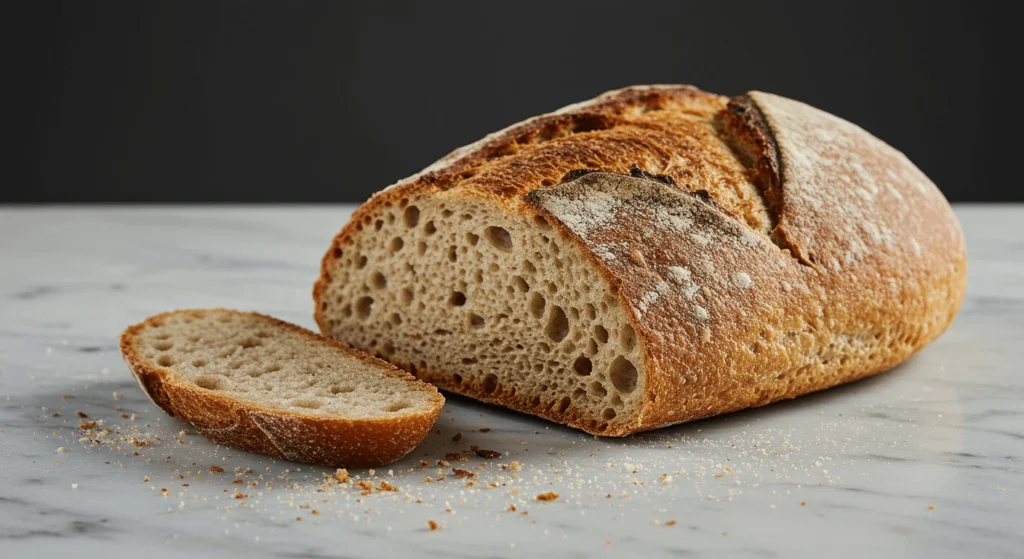
Mastering the Art of Breading Techniques
Mastering breading techniques is key for a crispy texture in baking and cooking. You can use bread and crumbs to add crunch and flavor. This works for chicken, fish, vegetables, and snacks. First, learn the standard breading procedure and pick the right crumbs for your recipe.
The type of bread for crumbs affects the final dish. Panko crumbs are great for delicate foods like fish and chicken. Whole wheat crumbs add a nutty flavor and extra texture.
Standard Breading Procedure
The breading process has three steps: flour, egg wash, and crumbs. This makes the crumbs stick to the food and creates a crispy outside. You can also try different seasonings and spices in your bread and crumbs for extra flavor.
Achieving the Perfect Crispy Texture
To get a perfect crispy texture, focus on cooking time and temperature. Try different crumbs like panko or whole wheat for extra crunch. Also, experiment with baking instead of frying to avoid extra oil.
Sweet Applications for Breadcrumbs in Desserts
Breadcrumbs aren’t just for savory dishes. They can also add texture and flavor to desserts. You can use them in cheesecakes, ice cream toppings, and more. Let’s look at how breadcrumbs can make your desserts special.
In bread and crumbs desserts, finding the right balance is key. Breadcrumbs can make a cheesecake crust crunchy or add a unique touch to ice cream. Desserts like bread pudding, crumble toppings, and trifles are great for using stale bread. You can also add your favorite flavors and ingredients.
Here are some ideas for using breadcrumbs in your desserts:
- Use breadcrumbs to create a crunchy crust for your cheesecake or pie
- Add breadcrumbs to your ice cream for a unique texture and flavor
- Make a bread pudding with stale bread and your favorite spices and sweeteners
- Use breadcrumbs to create a crumble topping for your fruit crisps or cobblers
Adding breadcrumbs to your desserts can make them more interesting. Next time you bake, think about using breadcrumbs. They can turn stale bread into a tasty dessert that will wow everyone. Whether it’s for a crunchy crust or ice cream topping, breadcrumbs offer endless possibilities.
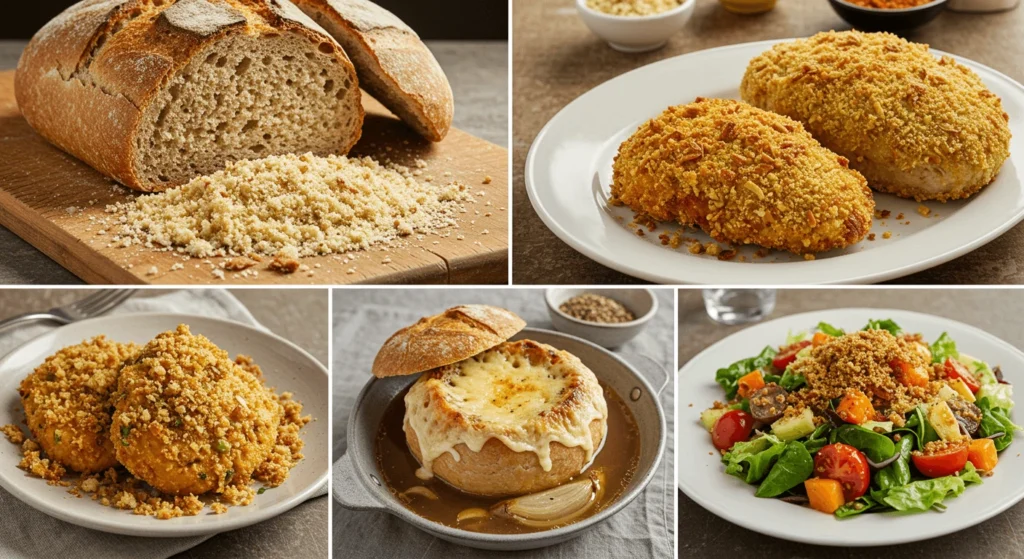
Creating Custom Seasoned Bread Crumb Blends
Using bread and crumbs can really enhance your meals. You can make your own seasoned breadcrumb blends. This is done by mixing herbs and spices with your bread and crumbs.
Think about the cuisine you want to make. For a Mediterranean dish, add oregano, thyme, and rosemary. For an Asian dish, try ginger, garlic, and soy sauce.
Some Popular Blend Options
- Mediterranean mix: oregano, thyme, rosemary, and lemon zest
- Asian-inspired blend: ginger, garlic, soy sauce, and sesame seeds
- Herb and spice variation: parsley, basil, and dill, with a hint of paprika
Creating your own breadcrumb blends adds a personal touch to your meals. It can elevate your cooking, whether it’s for a weeknight dinner or a special occasion.
Blend NameIngredientsUsage
Mediterranean Mix oregano, thyme, rosemary, lemon zest, chicken, fish, vegetables
Asian-Inspired Blend ginger, garlic, soy sauce, sesame seeds stir-fries, noodles, dumplings
Herb and Spice Variation parsley, basil, dill, paprika salads, soups, sandwiches
Using Breadcrumbs as a Binding Agent
Breadcrumbs are a versatile ingredient in cooking. They add texture and flavor and help ingredients stick together. Let’s look at how you can use breadcrumbs as a binding agent.
Breadcrumbs work well in many dishes, like meatballs and veggie burgers. The trick is to find the right mix of breadcrumbs and other ingredients. A good starting point is 1/4 cup of breadcrumbs for every pound of meat or veggies. You can tweak this ratio based on your dish and preferences.
Here are some ways breadcrumbs help bind ingredients:
- Meatballs: Mix breadcrumbs with ground meat, egg, and spices for a binding agent.
- Veggie burgers: Breadcrumbs help hold together veggies, beans, and grains in a patty.
- Meatloaf: Breadcrumbs keep the meatloaf moist and help it hold its shape.
Using breadcrumbs as a binder makes dishes more cohesive and easier to cook. Try different types of breadcrumbs and cooking methods to find what works best for you.
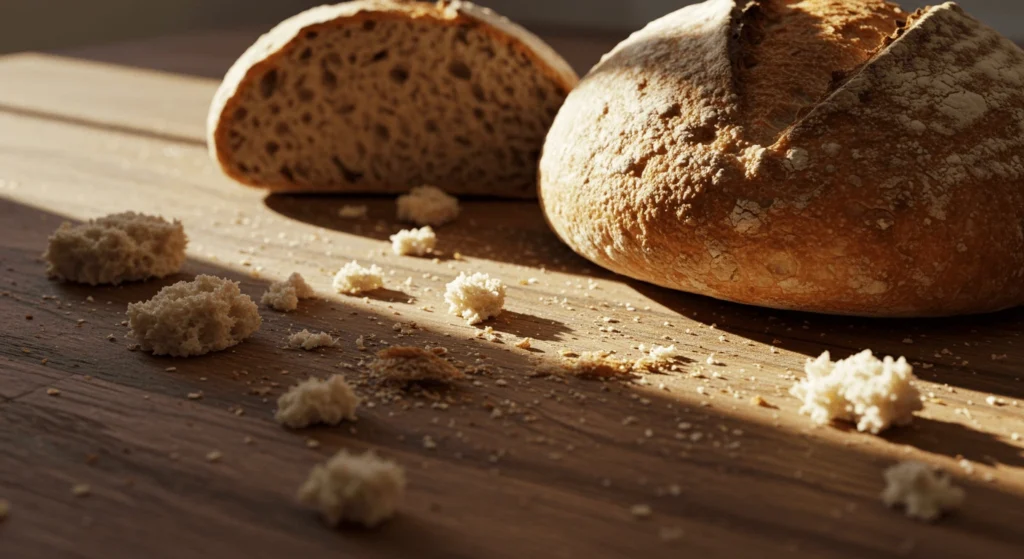
Incorporating Bread and Crumbs in Traditional Recipes
Bread and crumbs are key in the kitchen. They add texture and flavor to dishes, making them more exciting. We’ll show you how to use them in classic recipes to make your meals better.
Start by using bread and crumbs in meatloaf. They help the ingredients stick together, making the dish more flavorful. Breadcrumbs also add crunch to casserole toppings, making them more appealing.
Classic Meatloaf Enhancement
Meatloaf is a classic dish that can be improved with bread and crumbs. Adding breadcrumbs makes the meatloaf tender and juicy. Here are some tips to enhance your meatloaf recipe:
- Use fresh breadcrumbs for a lighter texture
- Incorporate herbs and spices into the breadcrumbs to enhance their flavor
- Don’t overmix the ingredients to avoid a dense meatloaf
Casserole Toppings
Casserole toppings can be made more exciting with breadcrumbs. Mix breadcrumbs with grated cheese, chopped herbs, and spices for a delicious topping. Here are some ideas for casserole toppings:
- Breadcrumbs with parmesan cheese and parsley
- Breadcrumbs with cheddar cheese and paprika
- Breadcrumbs with garlic and thyme
Stuffing Variations
Stuffing can also be improved with bread and crumbs. Adding breadcrumbs makes the stuffing more cohesive and flavorful. Here are a few creative ideas for different stuffing variations:
Stuffing VariationIngredients
Herb and Cheese Stuffing Breadcrumbs, grated cheese, chopped herbs, spices
Sausage and Apple Stuffing Breadcrumbs, sausage, chopped apple, onions
Mushroom and Leek Stuffing Breadcrumbs, sautéed mushrooms, leeks, garlic
By adding bread and crumbs to your traditional recipes, you can make your dishes more exciting. Try different types of breadcrumbs and ingredients to find the perfect mix for your meals.
Elevating Pasta Dishes with Breadcrumb Toppings
Adding breadcrumb toppings to pasta dishes can make your meals better. It adds a nice crunch and flavor. You can use different types of bread and crumbs, like panko or whole wheat, for a unique taste.
Choose the right breadcrumb topping for your pasta. A light topping works well with thin pasta like spaghetti. But a heartier topping with herbs is better for thicker pasta like pappardelle.
Here are some great breadcrumb topping ideas:
- Garlic and parmesan for a classic Italian taste
- Herbs like parsley, basil, or oregano for a fresh flavor
- Spices like red pepper flakes or paprika for a spicy kick
Breadcrumb toppings can make your pasta dishes exciting and tasty. They’re perfect for adding crunch to a simple meal or impressing guests with a fancy dish. Breadcrumbs are a simple way to make your cooking better.
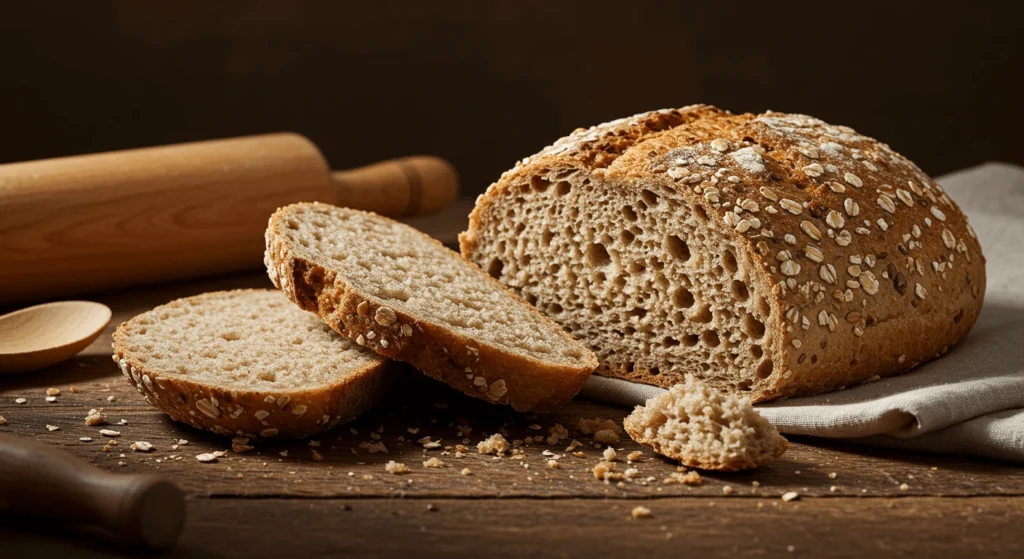
Making Gourmet Bread-Based Appetizers
Bread and crumbs can really elevate your cooking. With a bit of creativity, you can make amazing appetizers. These are perfect for any event.
Start by looking at the bread and crumbs you have. Fresh bread makes great crostini. Stale bread turns into crunchy breadcrumbs. Try different breads like baguette or ciabatta for extra flavor.
Stuffed Mushrooms
Stuffed mushrooms are a fantastic choice. Fill mushroom caps with sausage, cheese, and breadcrumbs. Bake until they’re golden. Add fresh herbs like parsley or thyme for an extra taste.
Cheese Balls
Cheese balls are another tasty option. Mix cream cheese, shredded cheese, and breadcrumbs. Shape into balls and chill until firm. Serve with crackers or garnish with herbs. Adding diced ham or bacon gives them a smoky taste.
Crostini Creations
Crostini is a great way to use bread. Slice a baguette thinly, toast, and top with cheese, meats, and spreads. Use different breads like ciabatta or focaccia for more texture and flavor.
Here are more ideas for bread-based appetizers:
- Bruschetta: toasted bread with garlic, diced tomatoes, and basil
- Breadsticks: crispy sticks served with marinara sauce
- Croutons: crunchy breadcrumbs for salads or soups
Transforming Texture in Vegetable Dishes
Adding a crunchy texture to vegetable dishes can make them more enjoyable. Using bread and crumbs is a great way to do this. Breadcrumbs can make roasted or sautéed veggies more appealing.
Try sprinkling breadcrumbs over roasted veggies like broccoli or Brussels sprouts before baking. This will give them a golden-brown crust. You can also use breadcrumbs for crispy fried veggies like zucchini or eggplant.
There are many types of breadcrumbs you can use, like panko, whole wheat, or gluten-free. Seasoning them with herbs and spices can add even more flavor. This way, you can experiment with different textures and tastes in your veggie dishes.
Breadcrumbs can also make your dish look better. Sprinkle them over the veggies or use them to create patterns on the plate. This adds to the dish’s appeal and enhances your dining experience.
Creative Bread Pudding Variations
Exploring culinary arts shows us bread and crumbs’ versatility. Bread pudding is an excellent way to repurpose stale or leftover bread. It can be made in many ways, depending on what you like.
Bread pudding can be made with different breads, like baguettes or challah. To start, tear the bread into small pieces. Then, soak them in a mix of eggs, milk, and sugar. You can add flavors like vanilla or cinnamon.
Savory Options
You can also make savory bread pudding. Add grated cheese, herbs, or veggies to the mix. It’s a tasty way to use leftover bread.
Sweet Interpretations
For something sweet, add dried fruit, chocolate chips, or caramel. Using brioche or croissants can make it even richer. Always use fresh bread and crumbs for the best taste.
International Versions
Bread pudding is loved worldwide, with each country having its own twist. In France, it’s “pain perdu” with eggs and milk. Italy’s version, “panettone,” includes sweet bread and spices. Trying different versions is always exciting.

Sustainable Kitchen Practices with Bread Usage
Exploring sustainable cooking means cutting down on food waste. A key area is bread usage, especially with bread and crumbs. Simple strategies can help you waste less and make your kitchen greener.
Start by turning stale bread into breadcrumbs. Use them in dishes like meatballs or veggie burgers. This cuts down on waste and boosts your meals’ texture and taste. Also, use bread and crumbs as a binder instead of eggs or other ingredients. This makes your cooking more sustainable.
Here are more ways to make your bread usage more sustainable:
- Freeze leftover bread for future meals, like bread pudding or croutons.
- Top soups or salads with bread and crumbs for crunch and texture.
- Make a bread-based appetizer, such as stuffed mushrooms or cheese balls, to impress guests and cut down on waste.
By using these sustainable cooking tips and getting creative with bread and crumbs, you’ll waste less and make your meals more exciting. So, before you toss that stale loaf, think of all the possibilities with sustainable cooking and bread and crumbs!
Advanced Coating Techniques for Proteins
To elevate your cooking, mastering advanced coating techniques for proteins is key. Using bread and crumbs can add texture, flavor, and visual appeal. With a few simple techniques and the right ingredients, you can impress your guests.
Advanced cooking techniques include using bread and crumbs for coatings. For example, panko bread and crumbs make a light, crispy coating for fish and seafood. Whole wheat bread and crumbs add a nutty flavor to poultry.
Fish and Seafood Applications
Fish and seafood are ideal for advanced coatings. A mix of bread and crumbs, spices, and herbs complements their delicate flavors. Here are some popular techniques:
- Using panko bread and crumbs for a light, crispy coating
- Adding grated Parmesan cheese for extra flavor
- Using lemon zest and herbs for a bright, citrusy taste
Poultry Preparations
Poultry also benefits from advanced coatings. A mix of bread and crumbs, spices, and herbs adds flavor and texture. Here are some techniques for chicken or turkey:
- Using whole wheat bread and crumbs for a nutty flavor
- Adding paprika and garlic powder for extra taste
- Using buttermilk to tenderize before coating
Mastering these techniques can elevate your protein dishes. Experiment with different breads, crumbs, spices, and herbs to find the perfect combination.
Troubleshooting Common Bread Crumb Issues
Working with bread and crumbs can sometimes lead to problems. These issues can make your dishes less than perfect. But, with the right approach, you can fix these problems easily.
One common issue is when bread and crumbs become too dense or soggy. To solve this, just adjust how much bread you use compared to liquid ingredients.
It’s key to know how to fix these issues. If your bread and crumbs don’t brown right, try changing the oven temperature. Or, use a different bread type. Trying different breads can also help you get the right texture and taste.
Here are some common breadcrumb problems and how to fix them:
- Too dense or soggy: Adjust the ratio of bread to liquid ingredients
- Not browning evenly: Adjust the oven temperature or use a different type of bread
- Lack of flavor: Add herbs and spices to the bread and crumbs
By following these tips, you can make dishes that everyone will love. Always use fresh bread and crumbs. And make sure to store them correctly to preserve their texture and taste. With a bit of practice, you’ll get better at using bread and crumbs. Troubleshooting will become second nature to you.
Expert Tips for Working with Different Bread Types
Working with bread and crumbs can be a challenge. But with the right advice, you can master it. Choosing the right bread for your recipe is key. We’ll guide you on picking the perfect bread, storing it, and using it in various dishes.
Knowing the unique traits of each bread type is essential. For example, ciabatta and focaccia are ideal for croutons. Meanwhile, baguettes and rustic bread are great for breadcrumbs. The right bread choice can lead to a variety of tasty dishes, from savory to sweet.
Here are some expert tips to enhance your bread and crumbs:
- Keep bread fresh by storing it in a cool, dry location
- Use day-old bread for croutons or breadcrumbs
- Try different seasoning blends to flavor your breadcrumbs
By following these tips, you’ll unlock the bread and crumbs’ full potential in cooking. Whether it’s a simple snack or a complex meal, the right bread and crumbs can make a big difference. With practice, you’ll become a pro at using bread and crumbs in your cooking.
Conclusion: Mastering Bread and Crumbs in Your Culinary Adventures
The humble bread and crumbs can be a culinary powerhouse. By mastering the techniques and applications in this guide, you’re ready to elevate your cooking. You can now create delicious, innovative dishes.
Transform day-old bread into gourmet croutons or use breadcrumbs as a binding agent. The possibilities are endless. Try custom-seasoned breadcrumb blends, use them in desserts, and see how they can improve your favorite recipes.
Embracing the versatility of bread and crumbs is key. Try out various cooking methods and enjoy the process of experimenting in the kitchen. With this knowledge, you’ll become a confident, creative cook. You’ll turn everyday meals into something truly extraordinary.
FAQ
What are the different types of breadcrumbs?
How should I store breadcrumbs to maintain freshness?
How can I transform day-old bread into gourmet croutons?
What is the standard breading procedure?
Can breadcrumbs be used in sweet desserts?
Yes, breadcrumbs can be used in sweet desserts. They can top cakes, pies, or cobblers. Or, they can be mixed into the batter for texture and flavor.
How can I use breadcrumbs as a binding agent?
Use breadcrumbs in meatloaf, croquettes, or fish cakes. They help hold ingredients together and add structure.
How can I use breadcrumbs to transform the texture of vegetable dishes?
How to make Bread Pudding?
How can I create custom-seasoned breadcrumb blends?
Mix dried breadcrumbs with herbs, spices, and other seasonings to create unique blends. Try Mediterranean, Asian, or herb and spice mixes
How can I use breadcrumb toppings to elevate pasta dishes?
Breadcrumb toppings add crunch and flavor to pasta. Sprinkle them over baked pasta or use them for a crispy mac and cheese topping.
